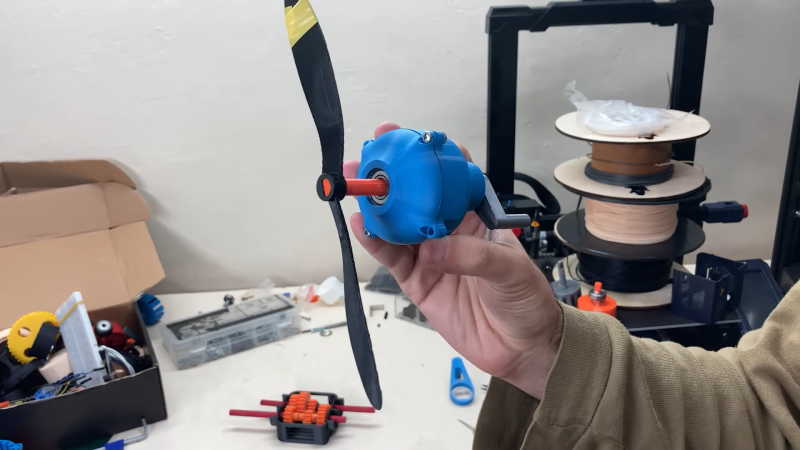Any project that contains something called a “flux modulator” instantly commands our attention. And while we’re pretty sure that [Retsetman] didn’t invent it after hitting his head on the toilet, this magnetic gearbox is still really cool.
Where most gearboxes have, you know, gears, a magnetic gearbox works by coupling input and output shafts not with meshing teeth but via magnetic attraction. [Retsetman]’s version has three circular elements nested together on a common axis, and while not exactly a planetary gear in the traditional sense, he still uses planetary terminology to explain how it works. The inner sun gear is a rotor with four pairs of bar magnets on its outer circumference. An outer ring gear has ten pairs of magnets, making the ratio of “teeth” between the two gears 10:2. Between these two elements is the aforementioned flux modulator, roughly equivalent to the planet gears of a traditional gearbox, with twelve grub screws around its circumference. The screws serve to conduct magnetic flux between the magnets, dragging the rotating elements along for the ride.
This gearbox appears to be a refinement on [Retsetman]’s earlier design, and while he provides no build files that we can find, it shouldn’t be too hard to roll your own designs for the printed parts.
Thanks to [Zane] for the tip.
















Enjoyable and instructive video.
Magnetism is some next level stuff.
Nice example of a “coaxial” magnetic gear. There are other types. For example the video below explains how a home-brew “planar” magnetic gear works. It should be noted that magnetic gears are not deterministic; with other words they can slip. Toothed gears cannot slip, at least not without damaging teeth. Magnetic gears have unique characteristics such as no gear tooth wear or noise, and if properly designed they do not self destruct when under high mechanical stress.
* Magnetic Gears [05:56]
https://www.youtube.com/watch?v=HBgjueoZ58Q
I guess that property could be used to a advantage of limiting torque at the end.
How efficient is such a design / what are the losses in comparison to a regular gear box?
That is a bit of of a how long is a piece of string question…
A magnetic gear will have frictional losses on the axle same as regular gears, but beyond that it gets rather complex and situational.
For instance if your gearbox needs a metal frame/case (even non-magnetic metals) there will be induced magnetic eddy current losses that a regular gearbox won’t have, the lack of direct contact however means for a load the magnets can drive it may well be a smoother running system – every tiny defect in a meshing gear tooth adds some resistance, and the lubrication requirements can add significant drag as well. Many other factors but I can’t go into them all now, may do some follow up or link to the reading material I have seen on the matter if I recall later.
is possible add wire outside? in my opinion this can produce electricity too.
Any electricity produced would be stolen from the kinetic energy of the propeller. And the more efficient the gearbox, the less stray field there is that you could use to generate electricity. If you want to generate electricity from something like a wind turbine, you’re much better off with a conventional electric motor as a generator.
There is such a thing.. it’s called step by step motor or stepper motor